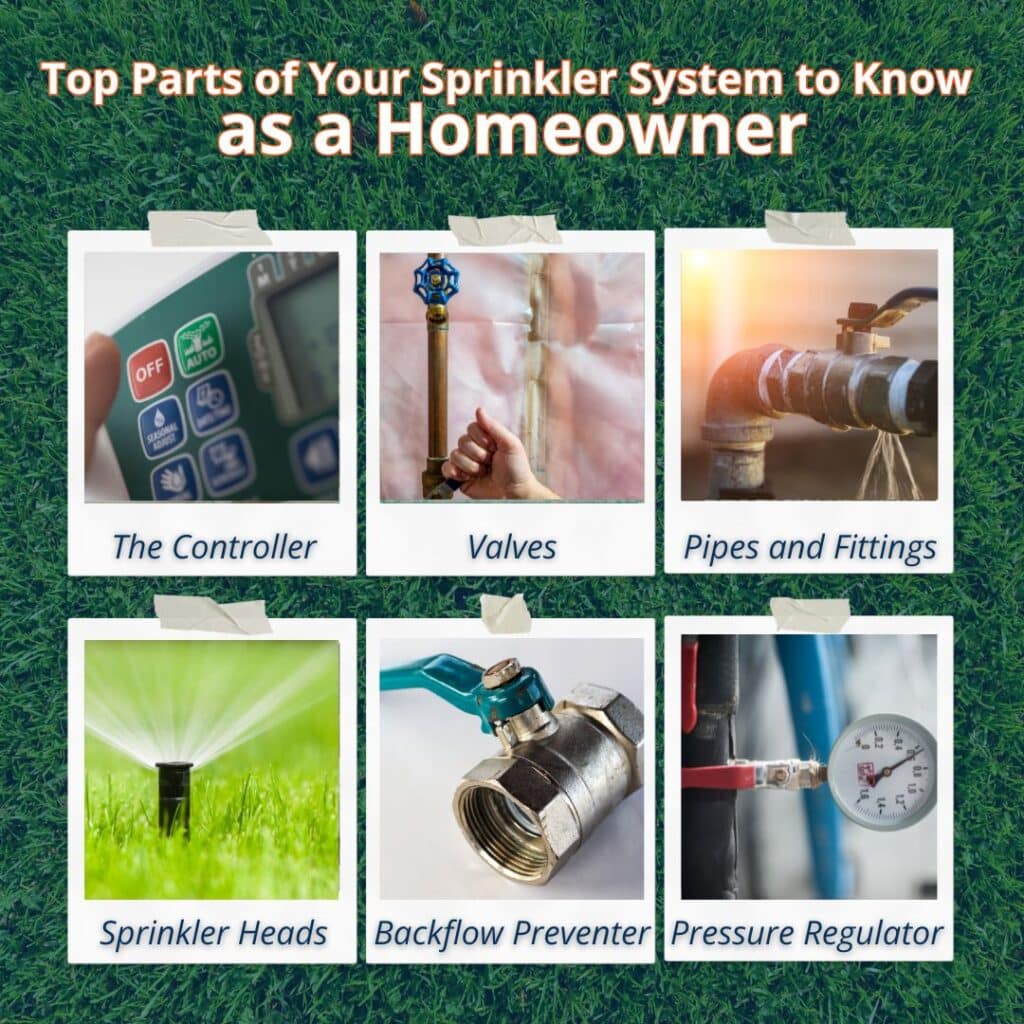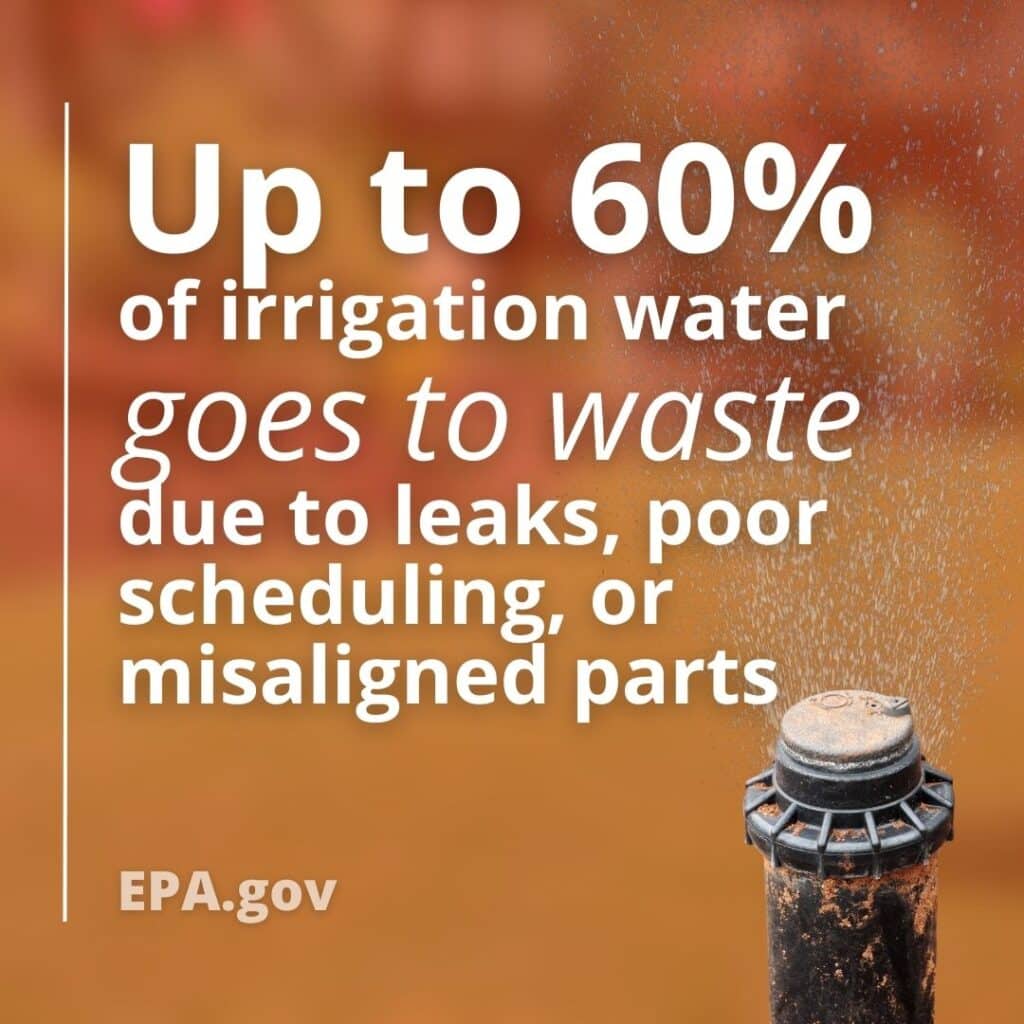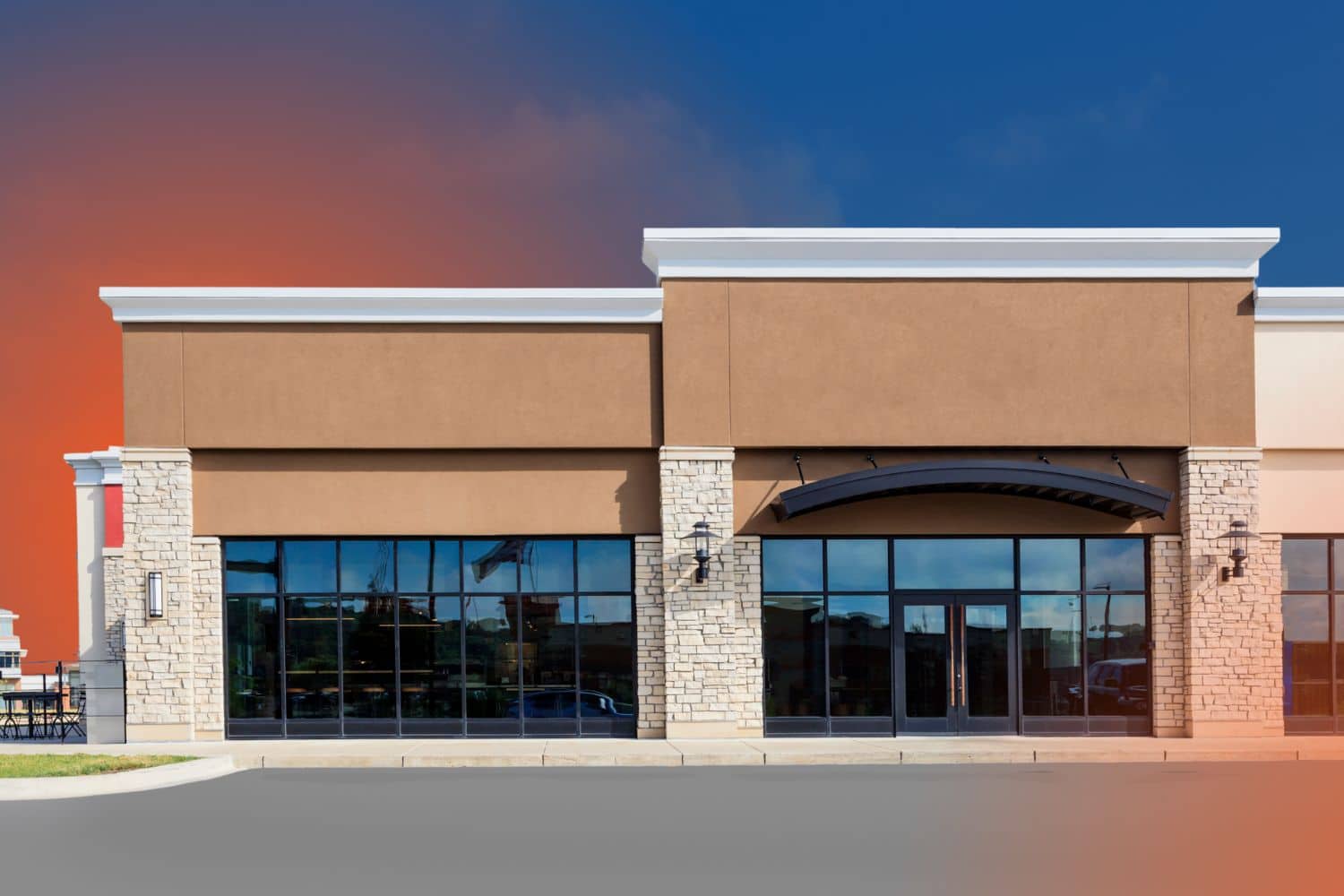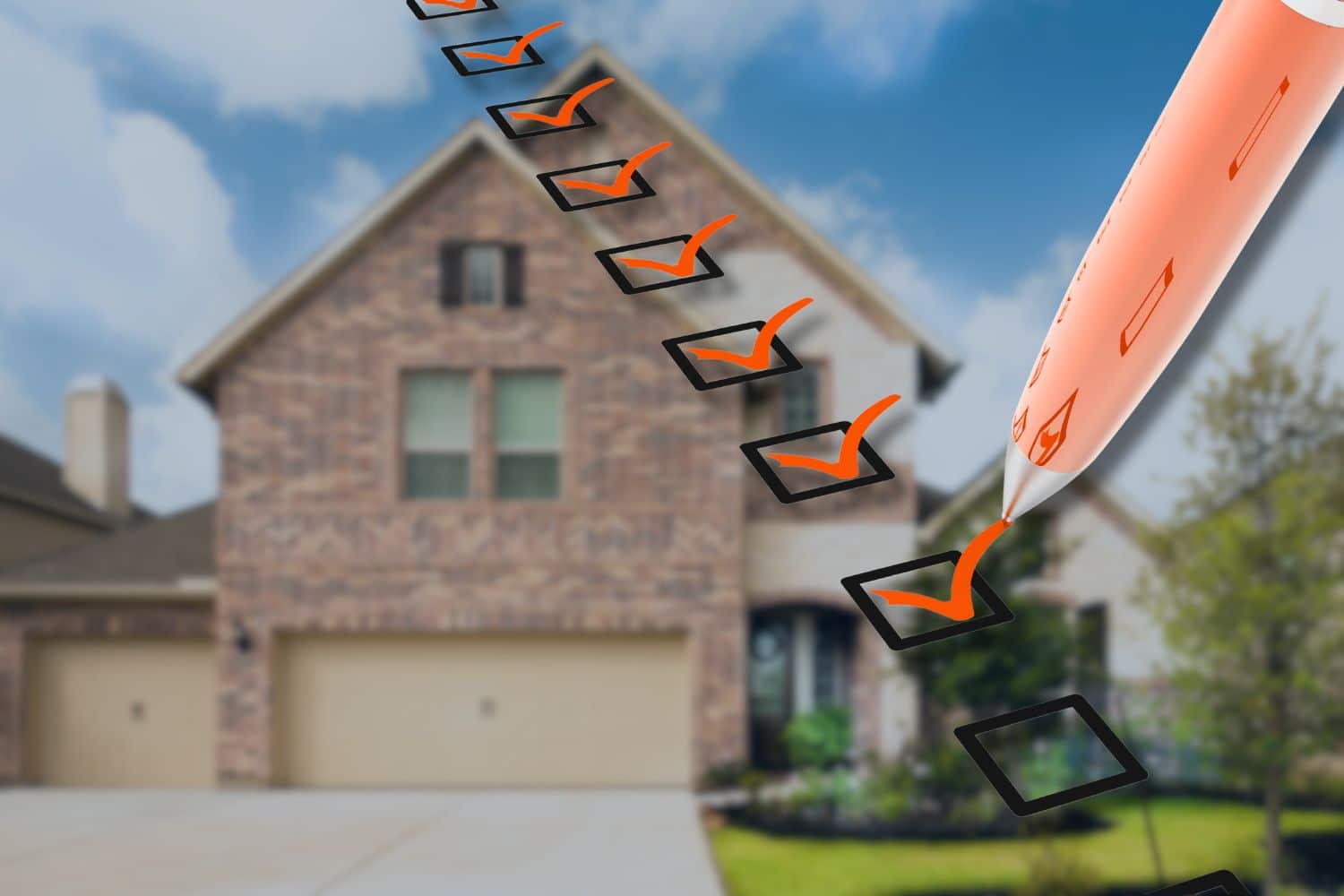Understanding the key parts of a sprinkler or irrigation system makes it easier to maintain, troubleshoot, and know when professional inspection is needed.
After all, a healthy lawn or garden doesn’t just happen by chance. Behind the scenes, a sprinkler or irrigation system works to keep grass, plants, and landscaping watered at the right times. But for many homeowners, the system feels like a mystery.
This guide breaks down each major component, common problems to look for, and how Centex Inspection Services helps Texas homeowners keep their systems running smoothly.
Table of Contents
ToggleWhy Sprinkler Systems Matter for Homeowners
A sprinkler system does more than keep grass green. It protects your home’s value and landscaping investment. In Texas, where hot summers can dry out lawns quickly, irrigation is often essential.
A well-functioning system provides:
- Even water coverage that prevents brown spots or overwatering
- Water conservation, which reduces waste and high utility bills
- Lower risk of foundation problems caused by uneven soil moisture
- Long-term savings by avoiding plant loss or yard damage
Poorly maintained or damaged systems, on the other hand, can waste thousands of gallons of water each month.
According to the EPA, a single broken sprinkler head can waste up to 25,000 gallons of water in a season. That’s why understanding the system’s parts matters.

Key Parts of a Sprinkler or Irrigation System
Let’s look at the most important components and what they do.
1. The Controller (or Timer)
The controller is like the brain of the system. It tells the sprinklers when to turn on, how long to run, and which zones to water.
- Smart controllers can adjust schedules based on weather or soil conditions.
- Older controllers may only allow fixed schedules, which can waste water.
If the controller malfunctions, you may notice zones not turning on or the system running at the wrong times. This not only wastes water but can also combine with roof runoff, depending on your home’s slope, leading to pooling or uneven soil moisture around the foundation.
2. Valves
Valves control the flow of water to different zones in the yard. Each zone is managed by a valve that opens and closes based on signals from the controller.
Common valve issues include:
- Sticking open or closed
- Electrical failures in the solenoid
- Leaks around the valve body
If a valve fails, parts of your yard may flood while others stay dry.
3. Pipes and Fittings
Pipes move water underground from the main supply line to sprinkler heads. Fittings connect the system and allow water to branch into different zones.
Texas soil conditions, like shifting clay or rocky areas, can put stress on pipes.
Over time, this can lead to cracks or leaks. Signs of trouble include soggy patches, uneven water pressure, or unusually high water bills.
4. Sprinkler Heads
Sprinkler heads are the most visible part of the system and come in different types:
- Fixed spray heads for smaller areas
- Rotors for larger lawns
- Bubblers for trees and shrubs
- Drip emitters for flower beds or gardens
Heads can break, clog, or become misaligned. A broken head may spray water unevenly or not at all. Regular inspection ensures every head is working properly and covering its zone.
5. Backflow Preventer
A backflow preventer keeps dirty water from flowing back into the drinking water supply. This is a critical safety feature that prevents contamination from pesticides, fertilizers, or standing water.
In many Texas cities, annual backflow testing is required by local ordinances. Failing to maintain or test this component can put your household water supply at risk.
6. Pressure Regulator
Water pressure that is too high can damage sprinkler heads and waste water. A pressure regulator keeps the flow steady and within the system’s safe range.
Without regulation, sprinklers may mist instead of spray, leading to wasted water that evaporates before it reaches the ground.
Common Residential Sprinkler System Problems
Knowing the parts makes it easier to spot issues early. Some of the most frequent problems Texas homeowners encounter include:
- Heads that are clogged with dirt or grass clippings
- Pipes damaged by soil movement or tree roots
- Valves that stick or fail due to mineral buildup
- Uneven watering from poor head placement
- High bills from hidden leaks underground
Many of these issues are hard to detect without digging or testing. That’s where professional inspections provide value.
What a Sprinkler System Inspection Includes
A sprinkler inspection looks at the entire system to ensure it’s operating correctly and efficiently. Centex Inspection Services provides inspections that typically include:
- Checking each sprinkler head for proper spray pattern
- Testing water pressure and regulator function
- Verifying controller programming and scheduling
- Inspecting valves for leaks or malfunctions
- Examining the backflow preventer for compliance
- Identifying hidden leaks or damaged pipes
For buyers, this is especially important before closing on a property. A malfunctioning irrigation system can lead to unexpected costs.
For current homeowners, an inspection truly pays off. Studies show up to 60% of irrigation water goes to waste because of leaks, poor scheduling, or misaligned sprinkler heads. Regular inspections catch these inefficiencies early and help you keep your water bill down.

How to Maintain Your Sprinkler System
Prevention is the best approach to keep water clear, coverage even, and costs down. Homeowners should:
- Run the system manually once a month to check all zones
- Trim grass around sprinkler heads to prevent blockages
- Replace worn or broken heads promptly
- Adjust schedules seasonally to avoid overwatering in cooler months
- Have the backflow preventer tested annually, if required in your city
Routine maintenance helps extend the life of the system and reduces the chance of surprises.
Other Related Questions and Answers
Does a regular home inspection include sprinkler systems?
Not always. Some inspectors note visible issues, but a dedicated sprinkler inspection is needed for a full evaluation. Centex offers these inspections as part of their complete home inspection services.
Can sprinkler problems affect a home’s foundation?
Yes. Overwatering near the foundation can cause soil expansion, while under-watering can cause it to shrink. Both conditions may lead to foundation stress or cracks.
What other inspections should Texas homeowners consider?
In addition to sprinkler inspections, it’s smart to schedule roof, foundation, and pool inspections if the property has these features. Centex provides all these services across Central Texas.
When to Call a Professional
It’s time to call in a professional sprinkler inspector if:
- Your system has recurring leaks or dry spots
- Water bills have spiked without explanation
- The system is older and hasn’t been inspected in years
- You’re buying or selling a home and need full documentation
Centex Inspection Services helps homeowners in Texas identify problems early, avoid wasted water, and protect property value. A professional inspection not only saves money but also ensures your irrigation system supports your home’s landscaping and foundation health.
Conclusion
Each sprinkler or irrigation system is complex, but understanding its main parts makes it easier to care for them. From the controller to the sprinkler heads, every component plays a role in keeping your yard healthy and your water use efficient.
Reach out to Centex Inspection Services to schedule a sprinkler system inspection today. Our team will make sure your system is operating safely, efficiently, and ready to protect your property.




